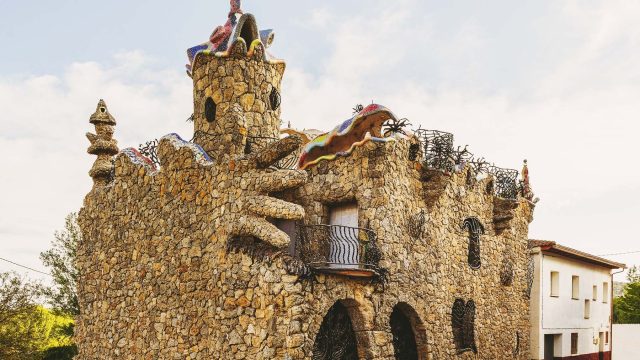In a remote village in the province of Guadalajaraand Modernist building Let everyone stun for its aesthetics out of place. Around it, a rural story environment enjoys a traditional architecture that marks the landscape. Although it is small in the population, this municipality keeps more than one patrimonial secret that earned it International recognition.
In its term, evidence of the Older rock art of the Iberian Levante. We could affirm that it is a difficult combination to find in the same location.
What is the village that has less than 100 inhabitants and that seems to the work of Gaudí?
More than a thousand meters above sea level, we run into Rooster rilloa discreet space in the geography of Guadalajara. It belongs to the Molina’s lordship regioneast of Castilla-La Mancha. Despite having Only 41 inhabitantsaccording to INE 2024, its location in a relief dominated by valleys and mountains makes it an outstanding point of the Iberian system.
The village rises on the banks of the Arroyo Viejo. The altitude of the municipality ranges between 1,030 and 1,404 meterswith dimensions like La Loma de las Matillas north. This situation conditioned its urban and architectural development, staying faithful to the forms of Molinese architecture.
In the urban nucleus, the house of the EMBID marquesesa construction with a baroque shield on its facade. Also in the center of the village, there is a public source with a bronze bust of D. Calixto Rodríguezhighlighted for having been the first politician to defeat Count Romanones in an election in 1910.
Access to the main points of interest of this municipality is free. The routes are marked and do not require special permits.
Modernism on the edge of the rooster rillo: This is the Rilla Capricho
However, what most attracts attention in Rillo de Gallo is A building that breaks with all the above. At the height of Kilometer 54 of the N-211a house stands directly to the Catalan modernism.
Popularly baptized as The Rilla Caprichothis property was devised by Juan Antonio Martínez Morenonative of Guadalajara, and shows clear influences of Antoni Gaudí.
The building was built in stone and It is distinguished by the use of Trencadís and Forja. Organic forms predominate on their facade, which includes reasons such as frogs, sphinxes, eyes and sunflowers.
The most unique element is a snake that falls from the roof to the ground, alluding to a seventeenth -century legend that speaks of a gigantic snake sorry in the nearby Dehesa de Villacabras.
This building is not a direct reproduction of any Gaudí work, but its style evokes it strongly. The choice of materials and the disposition of the decorative elements have earned him the comparison with constructions such as the whim of Comillas or the Batlló house.
In what part of this small town is there rock art and much cultural heritage?
Beyond modernism, the village of Rillo de Gallo hosts one of the most important archaeological sites in the province. In the place known as Coat of the plain The Rillo I and Rillo II setscave paintings of the postpaleolithic.
These manifestations They are part of the rock art of the Mediterranean archdeclared World Heritage for UNESCO in 1998.
The representations are found in a little intervened natural environment. In addition, they are protected as Cultural Interest Good Since February 17, 1997. This is the only municipality in Guadalajara with works registered in this international category.
But high, the cultural interest of the place does not end there. In the main square The arc alley openswhere a house retains a passage through which, according to oral tradition, The Cid would have passed on his way to Valencia. The parish church can also be visited, with a swords oriented to the west and a half -point arc as the main access.
Other places to visit in Rillo de Gallo and how is their culture
About six kilometers from the town center, in the north direction, there are the remains of the hermitage of the Virgen de la Carrasca. The road runs through areas such as Borbullón and La Fuente del Cura. This building was included in the red list of heritage by the Hispania Nostra organization, which warns of the progressive deterioration of its structure.
As for the festive calendar, the main celebrations are not concentrated in August. The date historically indicated in the town is the September 8coinciding with the Nativity of the Virgin Mary. They are followed by two additional days called the Fiestcilla and Grandma.
Finally, for those who are hungry, the gastronomy of this small town is characterized by its sausages. In particular, what is most recommended to try are black pudding and sausage, handmade products that maintain recipes transmitted from generation to generation.




